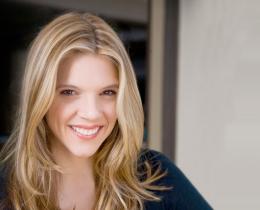Omega: How has teaching yoga to military members affected the way you teach?
Corwin: I probably teach more men than the average yoga teacher, and that’s definitely transformed my teaching style. With women you have to be authentic—we respond to authenticity and to others being open, accepting, and vulnerable. With men I find this to be even truer. If I want to slip in principles of mindfulness or surrender, I have to approach it from a firmly grounded and straightforward place, because that’s where these guys operate.
I have to avoid the typical yoga studio experience of bells, Sanskrit music, incense, and a soft demure voice. Usually women are more open to a yoga experience of this sort. But for military men, I have to show up with a raw, unburdened side—with the part of me that acknowledges there is war and death. They require I be more brutally honest and smart with my teaching. And I have to be right there with them, not teaching from afar or from some ethereal place.
I started to notice early on that they were creating me as much as I was creating the class. Knowing the nuances of the culture is important, like the differences between being in the Army versus the Navy, etc. These nuances can be hard for civilian teachers to perceive. However, although I’m part of the military community, and can understand what they’re going through, I still have to approach teaching with a blank slate.
Omega: What was your impulse for creating the Yoga for Warriors video series?
Corwin: I was teaching service members in Germany on their way home from deployment. Many of them enjoyed the practice and would ask where they could find yoga at home. Because teaching military is unique, I wanted to connect them to something they could do wherever and whenever. Yoga studios can be very intimidating to those who have never practiced before, and I wanted to create something they could do on their own time and in private, at least until they became comfortable. I began to work with the Give Back Yoga Foundation to create pathways for service members to access yoga easily, and one of the things we’ve done is the free Yoga for Warriors video series.
In the videos my students were two Green Berets who had never done yoga before. We ran through the sequence once right before we filmed, but you can clearly see in the videos how real and unscripted it became. I would say, “Okay, draw in your navel. Your navel. Nope, that’s your rib cage; draw in your navel. Try it like this.” That’s what my classes are like—beautifully messy. You have to be raw and honest to help them feel into their body like that for the first time. At first I was self-conscious because I was on camera and thought I was screwing it up, then I realized this is exactly the kind of video this community needs. Yoga with service members isn’t fluffy or easy or graceful; it’s real.
Omega: What aspects of yoga do you find military personnel are drawn to?
Corwin: Service members tend to have really amazing focus. They’re disciplined and they bring that focus onto the mat. To meet that, I have to give them a physically demanding practice. Not necessarily a fast vinyasa flow, but a strong physical practice that gets them to channel that focus into their body. A lot of military members have access to the gross, or larger feelings, but the subtle energies that yoga helps us get in touch with are less accessible at first. The intensity helps them find that.
Omega: What parts of the practice do they find more challenging?
Corwin: I had to change my expectations in terms of which asanas to teach, especially with the guys. Something like utkatasana (chair pose) is the hardest pose for a guy who lifts weights and has muscular shoulders. Putting his arms over his head can be wicked hard. So I had to let go of things like warming them up with five sun salutes. I just have them put their arms over their head for 30 seconds and they’re in a sweat.
Savasana (corpse pose) can also be challenging for military personnel. It can be hard for them to relax and feel completely safe. When guiding students into the silence and stillness of savasana, I always tell my military classes to feel free to keep their eyes open with a soft focus on the ceiling. My favorite moments in teaching are when I see a student drop their guard and either yawn or fall asleep. That can’t happen unless the nervous system calms enough to send them a signal that they’re safe.
Omega: Do you tell your students that you are a fighter pilot in the Navy?
Corwin: At first I didn’t. I didn’t want anyone in class or outside of class to know. Once I taught a series to Special Forces with my teacher Ann Richardson. I didn’t want them to know who I was. On the last day, Ann said something about me being a pilot in the military, and these 15 jacked guys were like, “Hold up, what?” In that moment I realized that to tell people about it up front was a move of trust and acceptance. I found that they were more willing to listen to what I had to say about yoga. I wanted my military life to be private, to keep my military story separate from my yoga. But in the end it was important to find a productive way to share my story because it encouraged others.
Omega: What’s your best piece of advice for those who are teaching military communities?
Corwin: Don’t go in with an agenda. Don’t go in with the idea that you’re fixing something or bringing a solution to a problem. If you do, they’re going to smell the BS, and they’re going to reject whatever concoction it is you think you’re serving them. Teaching is a reciprocal relationship. You have something to share, but they have something that will shape you too.



